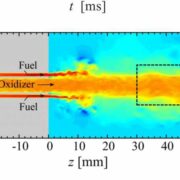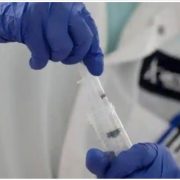Korean tokamak the artificial sun sets the new world record of 20 sec long operation at 100 million degrees

The Korea Superconducting Tokamak Advanced Research (KSTAR), a superconducting fusion device also referred to as the Korean artificial sun, set the new record because it succeeded in maintaining the heat plasma for 20 seconds with an ion temperature over 100 million degrees Celsius.
On November 24 (Tuesday), the KSTAR research facility at the Korea Institute of Fusion Energy (KFE) announced that during a joint research with the Seoul National University (SNU) and Columbia University of the us , it succeeded in continuous operation of plasma for 20 seconds with an ion-temperature above 100 million degrees, which is one among the core conditions of fusion within the 2020 KSTAR Plasma Campaign.
It is an achievement to increase the 8 second plasma operation time during the 2019 KSTAR Plasma Campaign by quite 2 times. In its 2018 experiment, the KSTAR reached the plasma ion temperature of 100 million degrees for the primary time (retention time: about 1.5 seconds).
To re-create fusion reactions that occur within the sun on Earth, hydrogen isotopes must be placed inside a fusion device like KSTAR to make a plasma state where ions and electrons are separated, and ions must be heated and maintained at high temperatures.
So far, there are other fusion devices that have briefly managed plasma at temperatures of 100 million degrees or higher. None of them broke the barrier of maintaining the operation for 10 seconds or longer. it’s the operational limit of normal-conducting device and it had been difficult maintain a stable plasma state within the fusion device at such high temperatures for an extended time.
In its 2020 experiment, the KSTAR improved the performance of the interior Transport Barrier (ITB) mode, one among subsequent generation plasma operation modes developed last year and succeeded in maintaining the plasma state for an extended period of your time , overcoming the prevailing limits of the ultra-high-temperature plasma operation.
Director Si-Woo Yoon of the KSTAR research facility at the KFE explained, “The technologies required for long operations of 100 million- plasma are the key to the belief of fusion energy, and therefore the KSTAR’s success in maintaining the high-temperature plasma for 20 seconds are going to be a crucial turning point within the race for securing the technologies for the long high-performance plasma operation, a critical component of a billboard fusion reactor within the future.”
“The success of the KSTAR experiment within the long, high-temperature operation by overcoming some drawbacks of the ITB modes brings us a step closer to the event of technologies for realization of fusion energy,” added Yong-Su Na, professor at the department of engineering , SNU, who has been jointly conducting the research on the KSTAR plasma operation.
Dr. Young-Seok Park of Columbia University who contributed to the creation of the heat plasma said: “We are honored to be involved in such a crucial achievement made in KSTAR. The 100 million-degree ion temperature achieved by enabling efficient core plasma heating for such an extended duration demonstrated the unique capability of the superconducting KSTAR device, and can be acknowledged as a compelling basis for top performance, steady state fusion plasmas.”
The KSTAR began operating the device last August and plans to continue its plasma generation experiment until December 10, conducting a complete of 110 plasma experiments that include high-performance plasma operation and plasma disruption mitigation experiments, which are joint research experiments with domestic and overseas research organizations.
In addition to the success in heat plasma operation, the KSTAR research facility conducts experiments on a spread of topics, including ITER researches, designed to unravel complex problems in fusion research during the rest of the experiment period.
The KSTAR goes to share its key experiment outcomes in 2020 including this success with fusion researchers across the planet within the IAEA Fusion Energy Conference which can be held in May.
The final goal of the KSTAR is to achieve endless operation of 300 seconds with an ion temperature above 100 million degrees by 2025.
KFE President Suk Jae Yoo stated, “I am so glad to announce the new launch of the KFE as an independent research organization of Korea. The KFE will continue its tradition of under-taking challenging researches to realize the goal of mankind: the belief of fusion energy,” he continued.
As of November 20, 2020, the KFE, formerly the National Fusion Research Institute, an affiliated organization of the Korea Basic Science Institute, was re-launched as an independent research organization.

























